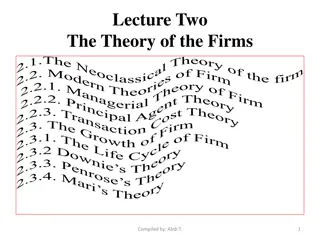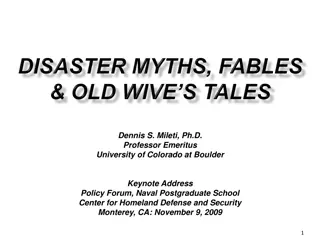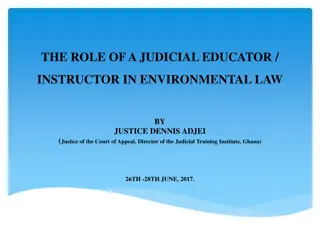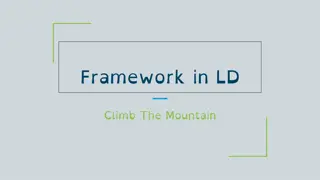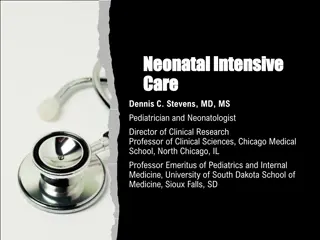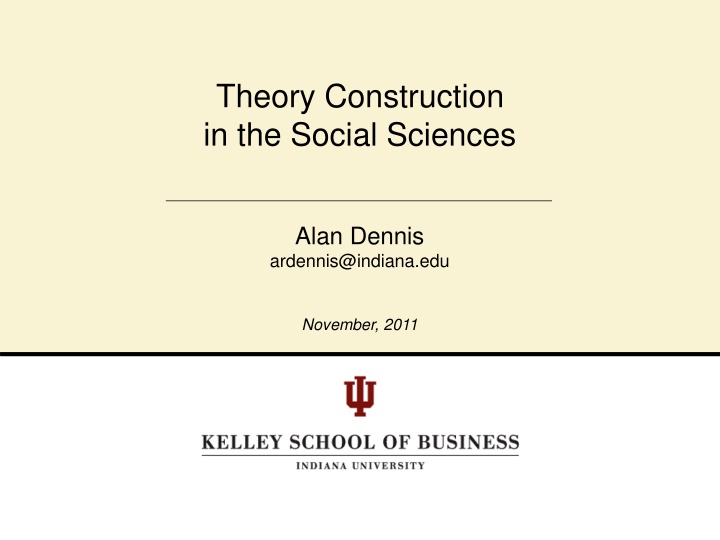
Theory Construction in the Social Sciences: Understanding Components and Types
Explore the key components of theory construction in the social sciences, including the definition of theory, different types of theories, components of a theory, and the distinction between Big T and small t theories. Discover what theory is not and gain insights into the process of theory construction.
Download Presentation

Please find below an Image/Link to download the presentation.
The content on the website is provided AS IS for your information and personal use only. It may not be sold, licensed, or shared on other websites without obtaining consent from the author. If you encounter any issues during the download, it is possible that the publisher has removed the file from their server.
You are allowed to download the files provided on this website for personal or commercial use, subject to the condition that they are used lawfully. All files are the property of their respective owners.
The content on the website is provided AS IS for your information and personal use only. It may not be sold, licensed, or shared on other websites without obtaining consent from the author.
E N D
Presentation Transcript
Theory Construction in the Social Sciences Alan Dennis ardennis@indiana.edu November, 2011
Agenda What is Theory What is Interesting Theory Variance Theory versus Process Theory A Process for Theory Construction Testing and Generalizing Theory
What is Theory You say tomato, I say tomato
Theory is 1. the explanation of a relationship between two entities: why A influences B Why do people adopt new technologies? 2. the explanation of factors underlying a specific phenomenon Why was Windows Vista not widely adopted? 3. the explanation of a phenomenon What does it mean to adopt a technology? Abend, 2008
Theory is 4. the explanation of theoretical meaning What is Marxist theory? 5. an overall perspective of understanding Technology can be thought of as a system of people and tools 6. and so on For the purpose of this Workshop, I ll use definition 1: the explanation of a relationship between two entities: why A influences B Abend, 2008
Components of a Theory What How Why Who, Where, When the boundary conditions to the relationship Toulmin Claim the entities that comprise the relationship the relationship(s) among the entities Reasons Evidence the underlying dynamics that link the entities Context Qualifiers Reservations Whetten, 1989
Components of a Theory What How Entity A Entity B Because . Who, Where, When Why Boundary Conditions Whetten, 1989
Big T Theory versus small t theory Big T Theories are given a name and usually have an acronym, written in capital letters Little t theories explain a phenomenon within a smaller domain, often an empirical paper Dennis and Valacich, 2001
What Theory is Not References Data Variables and Constructs Boxes and Arrows Hypotheses Theory is a story with a plot that explains how and why the characters (entities) interact with each other Sutton and Staw, 1995
Is This Theory? The intention to adopt a new technology has often been influenced by the perceived usefulness of that technology, the extent to which the technology can enable the user to accomplish a needed task. Venkatesh et al. (2003) conducted several experiments with undergraduate students and found that perceived usefulness had a significant positive impact on the intention to adopt. As perceived usefulness increased, so did the intention to adopt. This relationship has been observed in many other studies in a variety of experimental and organization settings (Morris, et al., 2000; Taylor and Todd, 2005; Venkatesh, et al. 2000). Therefore: H1: The perceived usefulness of a technology has a direct positive relationship with the intention to adopt that technology
What is Interesting Theory Don t write to get published, Write to get read and cited
Upending Conventional Wisdom is Interesting Organization Something that appears to be organized/chaotic isn t Stability Something that appears to be stable/changing isn t Evaluation Something that appears to be good/bad isn t Correlation Two things that appear to be independent/related aren t Causation The independent variable is the dependent variable Davis, 1971
Finding the Essence is Interesting Starting a New Research Stream Studying the uncommon, but not the unnecessary Formal Models Translating behavior into math Simplifying the Complex The definition of a Nobel prize in physics is Oh #$@!, why didn t I think of that. Tesser, 2000
Extending Implications is Interesting Surprising Implications of the Obvious When obvious truths leads to unexpected predictions Implications of the Bizarre When impossible beliefs are true Look for paradox Scientific discovery does not start with the word Eureka ; it starts with the words That s funny. Tesser, 2000
Which is Interesting? 1. As perceived ease of use of a technology increases, so does the intention to adopt. 2. As Web sites get slower, Internet users search for more information. 3. Novice Internet users are more likely than experienced users to believe that Web sites presented first in a Google search are better than others in the list.
Variance Theory versus Process Theory Every good variance theory has a good process theory at its core
Variance Theory Variance theory strives to understand What What entities explain the behavior of another entity? What explains the variance in an entity s behavior? Variables with different attributes affect other variables Often tested with quantitative data Van de Ven, 2007
Technology Acceptance Model is a Variance Theory Perceived Ease of Use Intention to Adopt Perceived Usefulness
Process Theory Process theory strives to understand How How do entities explain the behavior of another entity? How do events explain the behavior of an entity? Entities move through different stages at different times Often tested with qualitative data Van de Ven, 2007
Rogers Theory of Adoption is a Process Theory Knowledge Persuasion Decision Accept Implementation Confirmation Reject
A Process for Theory Construction How to go from a blank page to a first draft
The Rational Model of Science Theory is a waterfall model Method Data Analysis Conclusions Martin, 1982
The Garbage Can Model of Science Theory Data Method Analysis Conclusions Mine your Garbage Can Martin, 1982
Get The Idea Prior Empirical Results Prior Theory in Other Disciplines Methods The Idea A B Prior Theory Resources Personal Experiences Martin, 1982
Define The Idea The Idea A B 1. Title (the idea) 2. What is the problem or issue (why do I care)? 3. What are the key concepts (i.e., A and B)? 4. What is the Research Question (RQ)? 5. What answer do you expect to the RQ? 6. Why do you expect that answer? 7. What are the boundary conditions? 8. What are the methods? 9. How will the data answer the RQ? What How Why Who, When, Where How do I know what I think until I see what I write? Van de Ven, 2007
Write The Idea The Idea A B Title (1) Introduction - Setting (7) - Problem or Issue (2) - What this paper does (4&9: RQ and its answer) Prior Research and Theory - Prior Research - Hypothesis development - Define concepts (3) - State the relationship (5) - Explain the relationship (6) - State the hypothesis (4) Methods (8)
Refine The Idea Targeted Literature Search The Idea A B Thought Experiments
Targeted Literature Search Like Qualitative Research Search for evidence to support or refute your idea One hypothesis at a time Code articles (at the paragraph level) that offer evidence about your idea Both theoretical processes and data Review the codings, change the categories, iterate Multiple raters (authors) debate the evidence and change the idea The Idea A B
Thought Experiments Like Quantitative Research Set up tests of your idea like experiments Think about the manipulations Run the experiment in your mind Multiple raters (authors) debate the evidence and change the idea The Idea A B
You Can Change Your Data Literature searches and thought experiments guide your thinking, not dominate it. If you don t like what the literature tells you can change your data.
Assess The Idea What s New? Value-added contribution to current thinking So What? Will this change research or practice? Why So? Is the underlying logic solid? Well Done? Is it complete and thorough? Done Well? Is it well written and understandable? The Idea A B Whetten, 1989
Testing and Generalizing Theory Every research method is critically flawed
The 3-Horned Dilemma Maximum Precision Lab Experiments Field Studies Maximum Generalizability Maximum Realism Surveys McGrath, 1982
Generalization Setting 1 Setting 2 Generalize X Data Data
Generalization Generalize Setting 1 Setting 2 Instantiate Instantiate Theory Theory Data Data Draw Draw Conclusions Conclusions Lee and Baskerville, 2003
Is Science Marketing? Publishing a theory is like marketing a new product Find the message of the theory Its unique selling proposition Know the attributes that help sell a theory Who developed it (halo effect) Its origins (borrowed theory is easier to sell) Simplicity sells faster than the complex Consistency with current Zeitgeist Test market the theory With colleagues At conferences Peter and Olson, 1993
Questions I teach BUS S798 on Theory Development every Spring Semester, but I m on sabbatical this spring, so it won t be offered.
References Abend, G. (2008) The Meaning of They, Sociological Theory, 26:2, 173-199. Davis, M. S. (1971) That's Interesting: Toward a Phenomenology of Sociology and a Sociology of Phenomenonology, Philosophy of Social Science,1, 309-344. Dennis, A. R., and Valacich, J. S. (2001) Conducting Experimental Research in Information Systems, Communications of the AIS, 7:5 Lee, Allen S.; Baskerville, Richard L.,(2003) Generalizing Generalizability in Information Systems Research, Information Systems Research, 14:3, 221-243. Martin, J. (1982) "A Garbage Can Model of the Research Process," in J.E.McGrath (ed.) Judgment Calls in Research, Beverly Hills: Sage, pp. 17-39 McGrath, J.E. (1982) "Dilemmatics: The Study of Research Choices and Dilemmas," in J.E. McGrath (ed.) Judgment Calls in Research, Beverly Hills: Sage, pp. 69-80 Peter, J. P. and J. C. Olson, (1983) "Is Science Marketing?" Journal of Marketing, (47) pp. 111-125. Sutton, R. I. And Staw, B. M. (1995) "What Theory is Not," Administrative Science Quarterly, (40), pp. 371-384. Tesser, A. (2000) Theories and Hypotheses, in Sternberg, R. J. (ed) Guide to Publishing in the Psychology Journals, Cambridge University Press, 58-80. Van de Ven, A. (2007) Engaged Scholarship, Oxford, Whetten, D.A. (1989) What Constitutes a Theoretical Contribution? Academy of Management Review, (14), pp.490-495





